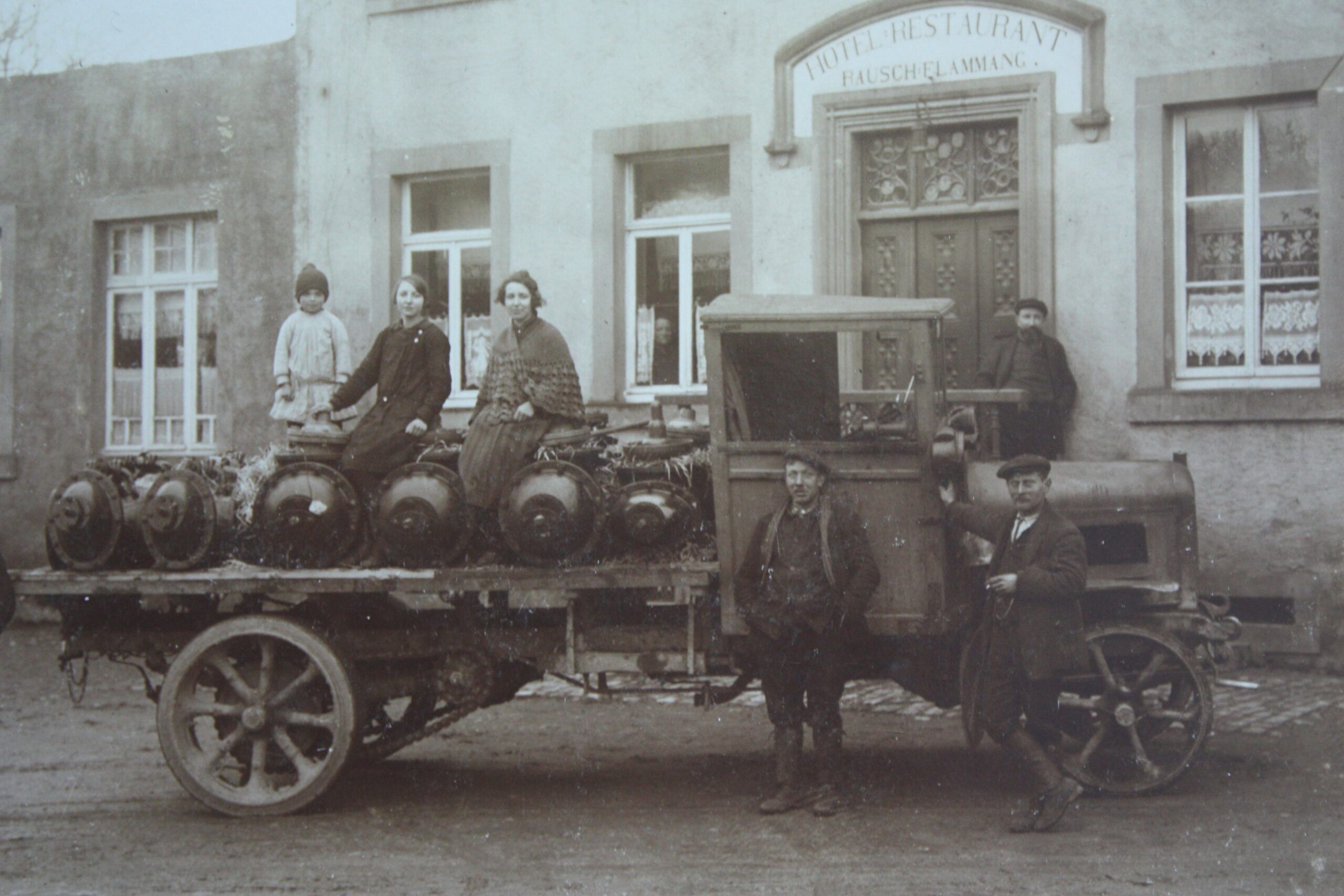Benz truck for water transport
1930
In the early days Wallenborn Transports was used to transport just about anything, both nationally and internationally.
One of the elements our trucks were used for was to transport water pipes and distributors to facilitate clean drinking water. This photo shows one of the Benz trucks carrying waterpipe distributors.

Post-World War I, Luxembourg transitioned from the German Customs Union to the Belgium-Luxembourg Economic Union (UEBL) in 1921. This shift influenced trade routes and logistics, aligning them more closely with Belgian and French markets.
The steel industry, dominated by companies like ARBED, relied heavily on railways for logistics. Industrial railways were constructed in areas such as Differdange, Dudelange, and Esch-sur-Alzette to transport iron ore and steel products efficiently.
Between 1930 and 1960, Luxembourg’s industrial and logistics landscape underwent significant changes, shaped by geopolitical shifts, post-war recovery, and regional cooperation.
Luxembourg’s economy during this period was heavily reliant on the steel industry, particularly through companies like ARBED (Aciéries Réunies de Burbach-Eich-Dudelange). Despite the global economic downturn of the 1930s, steel production remained the country’s industrial backbone. During World War II, production was disrupted under German occupation (1940–1944), but the post-war years brought rapid reconstruction and modernization of steel facilities. By the 1950s, Luxembourg was one of Europe’s key steel producers.
The German occupation had a deep impact on logistics and infrastructure. Railways, bridges, and roads suffered damage, which limited industrial output and internal mobility. However, after liberation in 1944, Luxembourg benefitted from the Marshall Plan and began rebuilding its transportation and energy infrastructure.
In the post-war period, the government invested in modernizing rail and road networks, aiming to support industrial growth and trade. The strategic location of Luxembourg—bordering France, Germany, and Belgium—made it a logistical hub in Western Europe. The integration of Luxembourg into the Benelux customs union (1948) and later into the European Coal and Steel Community (1951) further encouraged cross-border trade and coordinated logistics.
Luxembourg saw increasing numbers of foreign workers—especially from Italy and Portugal—joining the steel and logistics sectors. This demographic shift contributed to the expansion of both the industrial workforce and supporting services like transportation, warehousing, and supply chain management.
The years 1930–1960 marked a challenging yet transformative era for Luxembourg’s industry and logistics. From economic depression and wartime occupation to post-war revival and European integration, the country laid down the foundations for its future as a strategic and prosperous logistics hub in Europe.
Television broadcasting in Luxembourg was introduced in 1955 with the launch of Télé Luxembourg. It was operated by the Compagnie Luxembourgeoise de Télédiffusion (CLT) and was one of the first television channels in the region. At the time, the channel broadcast primarily in black and white, and it targeted not only viewers in Luxembourg but also in France and Belgium. The station played a pioneering role in European cross-border broadcasting and helped establish Luxembourg as a significant media hub long before satellite TV became common.